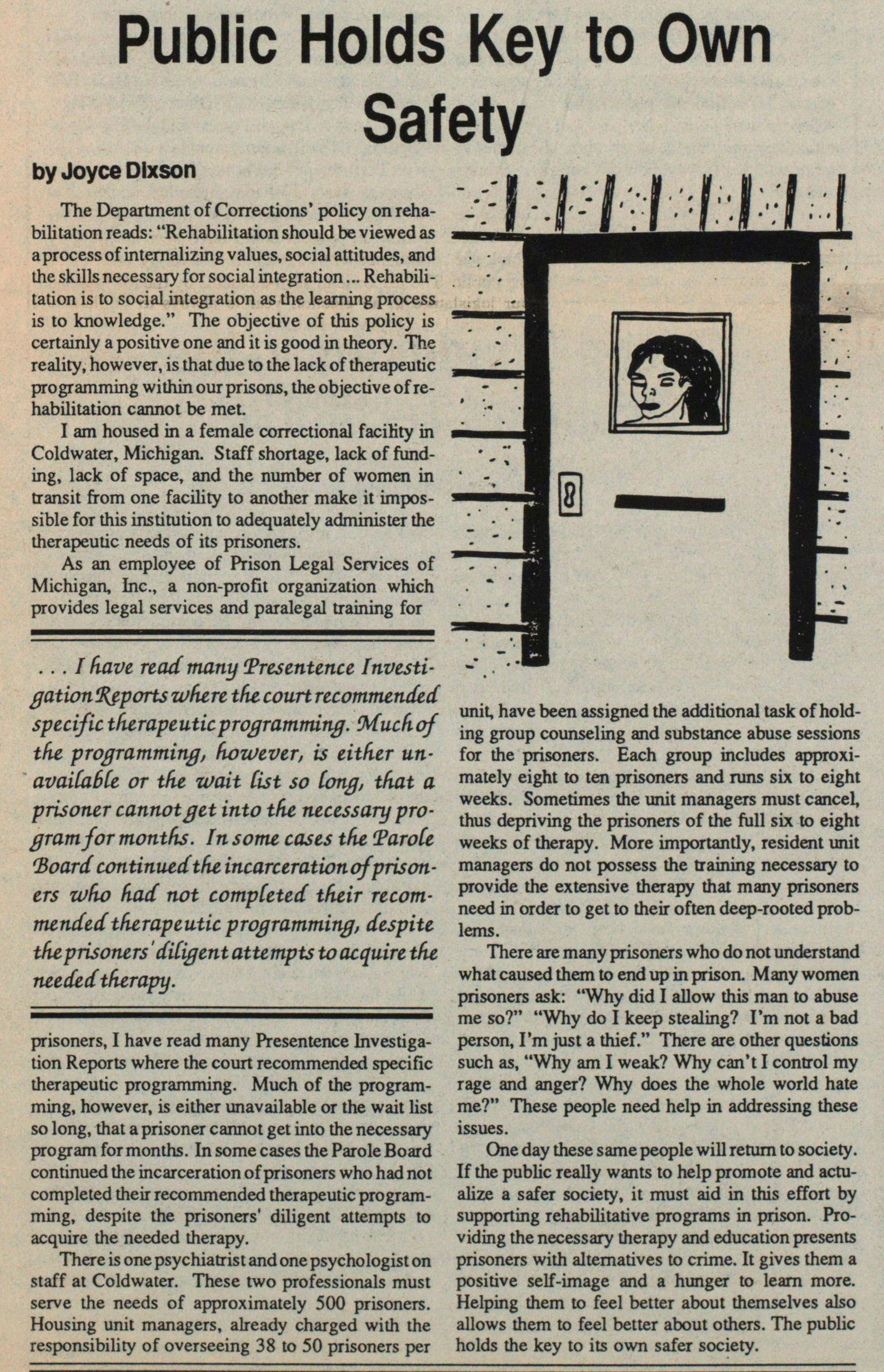Public Holds Key To Own Safety

The Department of Corrections' policy on rehabilitation reads: "Rehabilitation should be viewed as a process of internalizing values, social attitudes, and the skills necessary for social integration...Rehabilitation is to social integration as the learning process is to knowledge." The objective of this policy is certainly a positive one and it is good in theory. The reality, however, is that due to the lack of therapeutic programming within our prisons, the objective of rehabilitation cannot be met.
I am housed in a female correctional facility in Coldwater, Michigan. Staff shortage, lack of funding, lack of space, and the number of women in transit from one facility to another make it impossible for this institution to adequately administer the therapeutic needs of its prisoners.
As an employee of Prison Legal Services of Michigan, Inc., a non-profit organization which provides legal services and paralegal training for prisoners, I have read many Presentence Investigation Reports where the court recommended specific therapeutic programming. Much of the programming, however, is either unavailable or the wait list so long, that a prisoner cannot get into the necessary program for months. In some cases the Parole Board continued the incarceration of prisoners who had not completed their recommended therapeutic programming, despite the prisoners' diligent attempts to acquire the needed therapy.
There is one psychiatrist and one psychologist on staff at Coldwater. These two professionals must serve the needs of approximately 500 prisoners. Housing unit managers, already charged with the responsibility of overseeing 38-50 prisoners per unit, have been assigned the additional task of holding group counseling and substance abuse sessions for the prisoners. Each group includes approximately eight to ten prisoners and runs six to eight weeks. Sometimes the unit managers must cancel, thus depriving the prisoners of the full six to eight weeks of therapy. More importantly, resident unit managers do not possess the training necessary to provide the extensive therapy that many prisoners need in order to get to their often deep-rooted problems.
There are many prisoners who do not understand what caused them to end up in prison. Many women prisoners ask: "Why did I allow this man to abuse me so?" "Why do I keep stealing? I'm not a bad person, I'm just a thief." There are other questions such as, "Why am I weak? Why can't I control my rage and anger? Why does the whole world hate me?" These people need help in addressing these issues.
One day these same people will return to society. If the public really wants to help promote and actualize a safer society, it must aid in this effort by supporting rehabilitative programs in prison. Providing the necessary therapy and education presents prisoners with alternatives to crime. It gives them a positive self-image and a hunger to learn more. Helping them to feel better about themselves also allows them to feel better about others. The public holds the key to its own safer society.